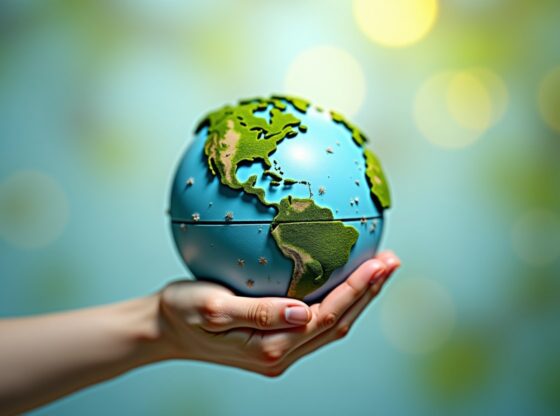Today, April 22nd, marks Earth Day, a global observance dedicated to demonstrating support for environmental protection. What began as a revolutionary idea in the United States in 1970 has blossomed into a worldwide movement, mobilizing billions to act on behalf of our planet. Understanding the history of Earth Day reveals the power of collective action in the face of environmental challenges and inspires continued efforts towards sustainability.
The roots of Earth Day lie in the escalating environmental crisis of the mid-20th century. Smog choked cities, polluted rivers caught fire, and the public largely remained unaware of the severe consequences of industrial pollution. Rachel Carson’s groundbreaking 1962 book, “Silent Spring,” exposed the dangers of pesticides and awakened many to the links between pollution and public health.
Inspired by the anti-war teach-ins of the era, Senator Gaylord Nelson of Wisconsin envisioned a national day of environmental education and action. His goal was to harness the energy of the student anti-war movement and channel public consciousness towards urgent environmental concerns. Teaming up with activist Denis Hayes, they organized the first Earth Day on April 22, 1970.
The date was strategically chosen to fall between Spring Break and final exams, maximizing student participation. The response was unprecedented. Twenty million Americans – roughly 10% of the U.S. population at the time – took to the streets, parks, and auditoriums to demonstrate against the deterioration of the environment. This nationwide outpouring of concern crossed political divides and socioeconomic boundaries, uniting people from all walks of life.
The impact of the first Earth Day was profound. It significantly increased environmental awareness and political pressure. Later that year, the United States Environmental Protection Agency (EPA) was established, and landmark environmental laws such as the Clean Air Act, the Clean Water Act, and the Endangered Species Act were passed.
Earth Day remained primarily a U.S. phenomenon for two decades. However, in 1990, Denis Hayes organized another major campaign, this time on a global scale. This transformed Earth Day into a worldwide event, mobilizing 200 million people in 141 countries and paving the way for the 1992 United Nations Earth Summit in Rio de Janeiro. Since then, Earth Day has continued to grow, becoming the largest secular observance in the world.
Today, Earth Day serves as a vital reminder of our responsibility to protect the planet and a call to action. Here are three ways you can celebrate Earth Day and contribute to its legacy:
- Participate in Local Cleanups or Tree Planting: Many communities organize events to clean up parks, beaches, or neighborhoods, or to plant trees. Joining these efforts is a direct way to improve your local environment and connect with others who share your concern.
- Reduce Your Environmental Footprint: Make a conscious effort to reduce your consumption, reuse items, and recycle properly. This could involve simple actions like carrying a reusable water bottle and shopping bags, conserving energy at home, or choosing sustainable products.
- Educate Yourself and Others: Take time to learn more about environmental issues, whether it’s climate change, plastic pollution, or biodiversity loss. Share your knowledge with friends and family, and inspire them to take action. Support environmental organizations and advocate for policies that protect the planet.
Earth Day’s history is a powerful testament to the impact individuals can have when they unite for a common cause. As we face increasingly pressing environmental challenges, the spirit of the first Earth Day is more crucial than ever. By taking action, big or small, we can all contribute to a healthier, more sustainable future for generations to come.

